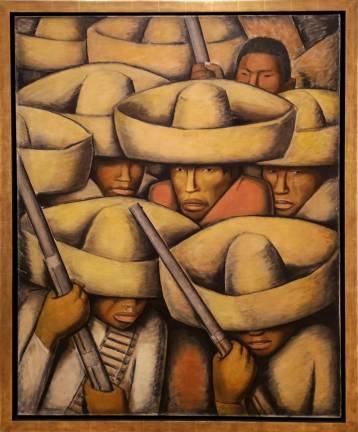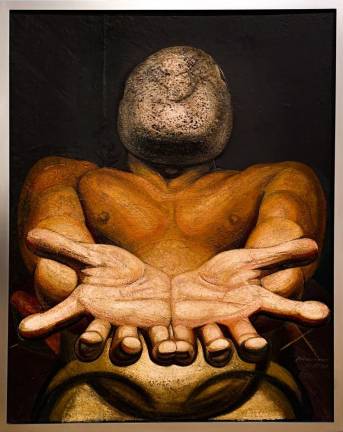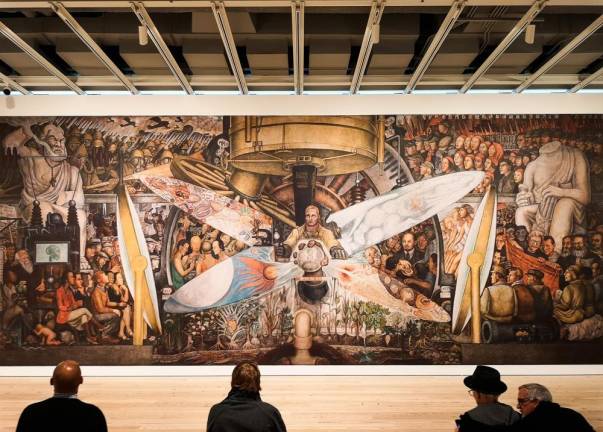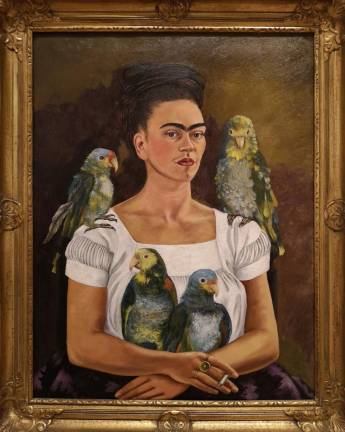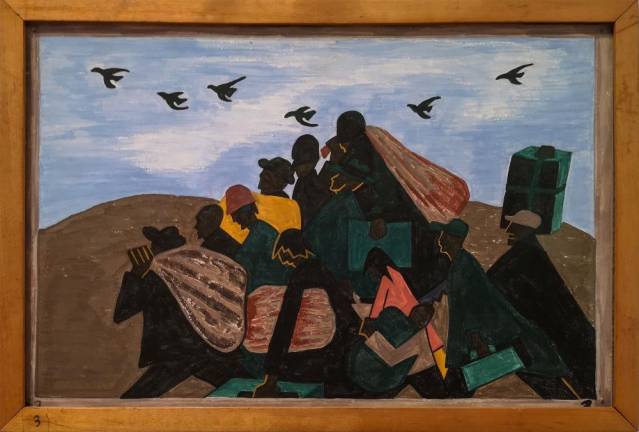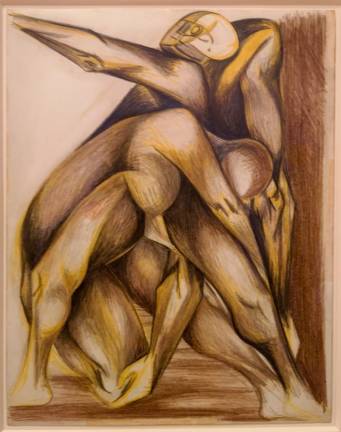There’s still time to see the Whitney’s “Vida Americana: Mexican Muralists Remake American Art, 1925–1945,” one of the best New York exhibitions of 2020, if not the best. The massive, sweeping show runs through January 31st, and if you can’t make it in to the museum, much of the work, including installation views, is on the Whitney’s website.
The exhibition, organized by Barbara Haskell along with Marcela Guerrero, Sarah Humphreville, and Alana Hernandez, is about how the Mexican revolution of 1920 led to a modern, cultural renaissance that spread far beyond its borders and impacted American art for decades to come.
“Between 1927 and 1940, Mexico’s three leading muralists — José Clemente Orozco, Diego Rivera, and David Alfaro Siqueiros — came to the United States to execute lithographs and easel paintings, exhibit their art, and create large-scale murals on both the East and West coasts and in Detroit. Their influence would prove decisive for American artists searching for alternatives to European modernism and seeking to connect with a public deeply shaken by the onset of the Great Depression and the economic and social injustices exposed by the collapse of the U.S. stock market,” notes Haskell in her excellent catalogue essay, significant excerpts of which are on the exhibition’s website. Do read it. Haskell’s insights add richness to the experience.
The years presented begin just after President Álvaro Obregón left office. It was he who’d commissioned Mexican artists to make murals as a way to communicate victory, prosperity and unity. When he left, so did the commissions. But the work had already caused a buzz. Artists – particularly from the Western United States – like photographer Edward Weston and a young art student from Wyoming named Jackson Pollock – saw the Mexican approach as an alternative to intellectual, European forms that so influenced the New York art world.
In the work and workshops of Orozco, Rivera, and Siqueiros artists found new techniques and vocabulary. Economic hardship, workers’ rights, income disparity, unemployment, global tensions, wars and race relations were as real 100 years ago as they are today. In gallery after gallery at the Whitney, American artists’ ideas about protest, democracy, and the struggle for equal rights are write large. “Vida Americana,” several years in the making, couldn’t be more timely.
Rare Gems
Two major murals, Diego Rivera’s commission planned for Rockefeller Center, and David Alfaro Siqueiros 1932 Los Angeles piece, “Tropical America,” were deemed too radical by their patrons, and were painted over. Massive reproductions are astonishing.
The show is filled with rare gems and poignant stories. If you missed Jacob Lawrence at the Metropolitan, ten of his works from “The Migration Series” are given a wall of their own. The Guggenheim is currently showing an early Jackson Pollock, “Mural,” from 1943. Fifteen even earlier pieces at the Whitney give a glimpse of the artist developing, trying out new materials, absorbing. Elizabeth Catlett and her husband Charles White traveled to Mexico and found in the muralists a way to commemorate and monumentalize African American experiences. William Gropper, Ben Shahn and others found inspiration for promoting the rights of laborers.
But all of these tributaries are traced back to the source. Orozco, Rivera, and Siqueiros, as well as Frida Kahlo, Tina Modotti, Lola Álvarez Bravo, and others created art that spoke to both peasants and politicians about the power of the people. “Vida Americana” is a show about coming together, about tearing down walls, about respect and inspiration. It’s about history, but more about art’s ability to inspire, educate, move, and give voice to realms that live beyond words and pictures – like justice, humanity, empathy, endurance, and transcendence.
“Vida Americana: Mexican Muralists Remake American Art, 1925–1945”
Through January 31, 2021
Whitney Museum of American Art
99 Gansevoort St
www.whitney.org
